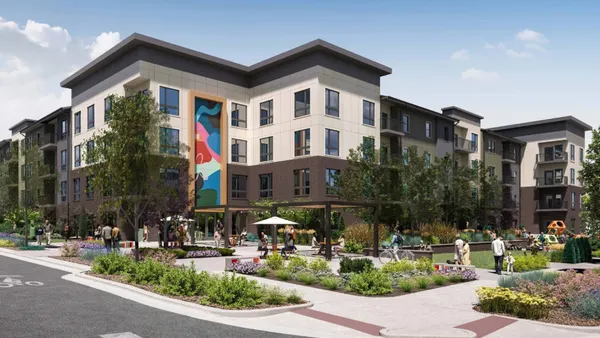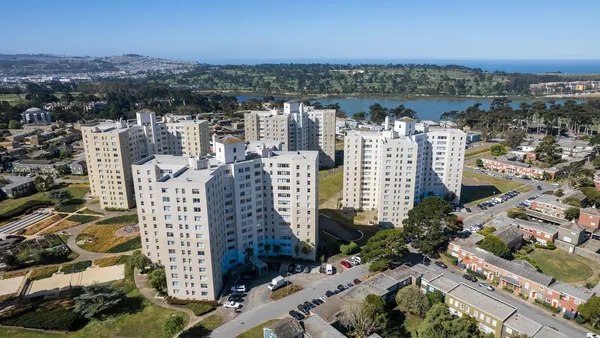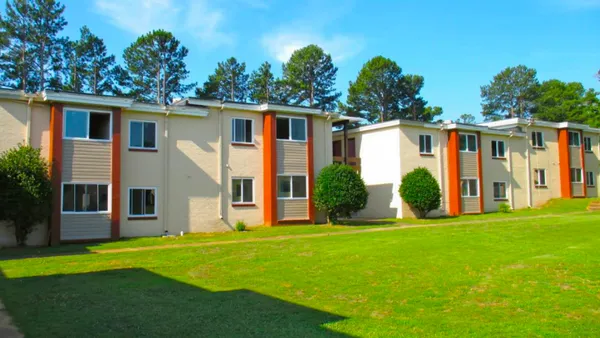In many multifamily communities, the blocker isn’t bandwidth, it’s physical infrastructure. With no property-owned conduit or fiber tying buildings together, owners rely on the incumbent ISP’s drops to each building. When management wants cameras, access control, callboxes, or other PropTech online, they end up buying separate business-class internet services for every building. The result: duplicated line items, stranded capacity, messy closets, slow troubleshooting and little leverage to modernize.
Here’s a different path. By standing up a property-wide operations network—fiber linking the MDF to every IDF, with segmented lanes for resident internet and PropTech—this 24-building, 450-unit community retired 24 monthly internet services overnight. On that same backbone, they layered Next Gen Bulk internet to deliver instant-on, multigigabit service with the latest Wi-Fi. The outcome: immediate OpEx savings, streamlined operations and sustained NOI; because the network finally belongs to the property, not the provider.
The Situation
A 24-building garden-style community (450 units) was paying for 24 separate business-class internet services, one per building, to run access control, callboxes and cameras. Each service cost roughly $90/month and every equipment closet told the same story: coax splitters everywhere, unlabeled jumpers and dangling cables left by successive vendors. The setup “worked,” but it was expensive, inflexible and upgrade-hostile. With no single property network, the site was boxed into cloud-only solutions and limited technology choices.
The Mandate
- Cut property operations spend without compromising life-safety systems.
- Clean up infrastructure and end the spaghetti-closet status quo.
- Enable growth: more cameras today; in-unit smart devices tomorrow.
- Drive asset value, not just lower a bill.
The Playbook
1) Build a true property operations network.
Internet Subway replaced 24 standalone services with a unified, fiber-fed backbone. Fiber extended to each building’s data closet, with network gear segmenting traffic for current and future PropTech—access control, callboxes, cameras, meters, monitors and more. Closets were cleaned, cables labeled, and terminations standardized so problems are easier to diagnose and fixes are fast.
2) Terminate the per-building internet lines.
By moving cameras, callboxes and access control onto the new backbone, the property no longer needed separate business-class services in every building. Twenty-four cable modems were shut off and monthly costs dropped immediately.
3) Layer in Next Gen Bulk for residents.
Alongside the operations backbone, Internet Subway delivered Next Gen Bulk community-wide. Residents get instant-on service at move-in, touchless speed upgrades (2.5, 5 and 8 Gbps options) and private, personal networks across 2.4/5/6 GHz Wi-Fi. Management benefits from automated onboarding tied to the PMS, delivering a differentiated resident experience. Think managed-Wi-Fi features with multigigabit performance and scalability.
The Financials Owners Care About
Direct OpEx Savings (Operations Network):
$90 × 24 buildings × 12 months = $25,920/year in immediate savings. That flows straight to NOI. At a 5.5% cap, $25,920 ÷ 0.055 ≈ $470k in value, just from eliminating the building-by-building circuits.
NOI Uplift (Next Gen Bulk):
Typical programs generate $50–$60 NOI per unit per month (market-dependent). At 450 units, that’s ~$270k–$324k/year. Capitalized at 5.5%, the program adds ~$4.9M–$5.9M in asset value. In this community’s case, the program increased value by roughly $5.4M—before counting the operations savings above.
Operational Wins (Beyond the P&L)
- Easier camera expansion: extending video coverage becomes a camera-and-cable exercise, not a new monthly bill.
- Smart-ready units: supports locks, thermostats, leak detection and sensors with traffic isolated from resident networks.
- Clean closets, faster troubleshooting: labeled patching and standardized terminations replace the rat’s nest; vendor work is auditable and issues resolve faster.
- Fewer vendors, less risk: one hardened backbone reduces sprawl and finger-pointing; SLAs are clear.
What Next Gen Bulk Delivers
- Marketable, scalable speeds: fiber-to-the-unit and multigigabit options (2.5/5/8 Gbps) keep pace with demand—no “up to 1 Gbps” ceiling that compresses in value.
- Personalization residents value: private SSIDs, automated activation at move-in and Wi-Fi across 2.4/5/6 GHz create value residents will pay for.
- Sustained NOI: as expectations rise, you can scale base speeds to protect pricing power and preserve NOI contribution.
Before & After (At a Glance)
Before: 24 per-building internet services × $90/mo powering cameras and callboxes; disorganized closets; limited flexibility; no bulk service NOI generation; no resident differentiation.
After: One fiber-fed backbone; 24 distinct internet services eliminated; $25,920/year OpEx savings (≈ $470k at 5.5%); Next Gen Bulk adds $270k–$324k/year NOI (≈ $5M+ in value); clean closets, scalable PropTech, smart-ready units, happier residents.
The Takeaway
For multifamily communities, network architecture is as much a financial decision as an IT or operations one. Replacing dozens of standalone building circuits with a single, connected property operations backbone trims recurring costs, unlocks operational flexibility and sets the stage for a resident internet program that materially boosts NOI and asset value.
Want to see the math on your asset? We’ll model OpEx reductions, Next Gen Bulk NOI and valuation impact for your property mix (cap-rate assumptions included) and deliver a clear blueprint for implementation. Contact Internet Subway to get started.








